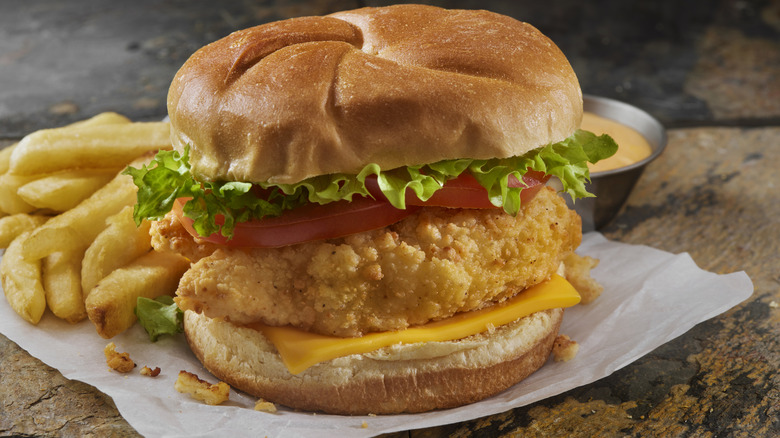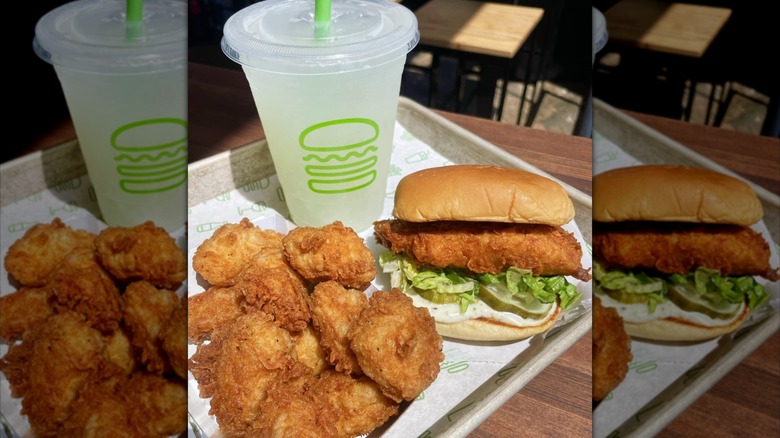How This Fast Food Chain Raises The Bar On Chicken Quality
Shake Shack had humble beginnings as a hot dog cart in 2001. Since then, it has skyrocketed into a hugely successful chain, producing some of the most unforgettable fast food milkshakes and highest-quality fast food chicken products around. At the heart of the operation, Shake Shack claims that its mission is "Stand for Something Good." Part of this includes its commitment to animal welfare and humane farming practices. The company provides full transparency on its chicken sourcing and the associated farming practices in both its U.S. and U.K. locations.
The fast food chain adopted the Better Chicken Commitment (BCC) in 2016, endeavoring to improve the quality of life for the chickens it purchases. Some of these values include no animal byproducts in chicken feed, no use of antibiotics, and no additional hormones that could compromise the chickens' quality. Additionally, Shake Shack is striving to meet its goal that the number of light hours the chickens are exposed to — including natural light — is fully in line with BCC requirements. Lastly, Shake Shack's suppliers meet the standards for enrichment — a metric that enhances the chickens' lives through equipment that multiple birds can occupy and enjoy together — and the quality and quantity of litter provided to the birds.
Shake Shack expanded this initiative to the U.K. with the European Chicken Commitment. This effort aims to improve the quality of the chickens' litter, enrichment, light exposure, and overall living conditions. It also seeks to limit the use of genetic-enhancing hormones and promote slower, more natural growth in the birds.
Shake Shack still has improvements to be made
Part of Shake Shack's transparency includes acknowledging areas where it can still improve and is actively working to do so. While the fast food chain ensures that its chicken is always fresh, never frozen, some standards have yet to be fully met. These include sourcing slow-growth chickens and ensuring appropriate conditions prior to stunning. The chain recognizes it has not yet fully achieved these goals and remains committed to working with suppliers to improve.
Another area of focus is the number of consecutive dark hours provided to the birds. Chickens raised for meat are entitled to four consecutive hours of darkness and six hours total throughout the day. The chain also aims to reduce stocking density. The BCC standard allows for no more than six pounds per square foot, while Shake Shack currently averages seven pounds per square foot. It is important to note that this is still within accepted industry standards (though the whole point of the BCC is to go above typical industry standards). The Better Chicken Commitment grants partners three to seven years to improve their animal welfare practices, and Shake Shack publishes an annual public report detailing its progress. The European Chicken Commitment includes many of the same goals, and the company has until 2026 to meet the outlined industry standards.


